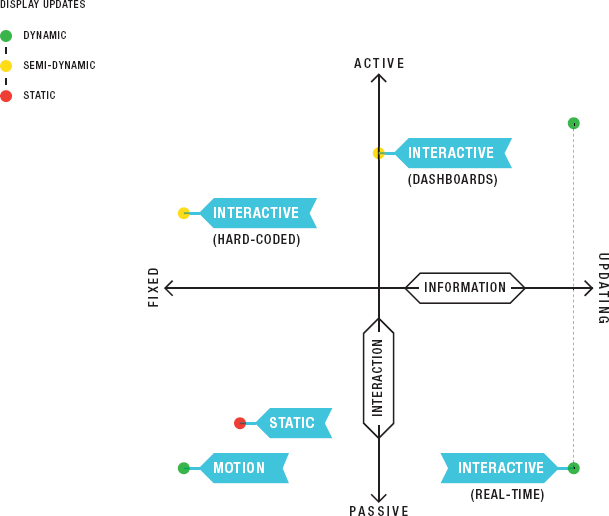CHAPTER 2
INFOGRAPHIC FORMATS: CHOOSING THE RIGHT VEHICLE FOR YOUR MESSAGE
As you embark on the journey to becoming a more visual company through using infographics, it is important to understand which format will help deliver your message most effectively. The key formats that can house infographic communication are static images, interactive interfaces, and motion content (Figure 2.1). There is no implied hierarchy, as the best format is determined by how effective it is at containing and delivering the information that you want to communicate. It is helpful to understand the attributes of each format, and to consider that many artistic mediums can be used within each of these categories.
Figure 2.1: Infographic Formats Quadrant.

Get Infographics: The Power of Visual Storytelling now with the O’Reilly learning platform.
O’Reilly members experience books, live events, courses curated by job role, and more from O’Reilly and nearly 200 top publishers.

